Chapter 1: Introduction
Chapter 2: Annual catches and overview
Chapter 3: Actual fishing method
Chapter 4: Attention to equipment
Chapter 5: The ecology of Kokanee in my home lake (Lake Numazawa, Fukushima Prefecture)
Chapter 6: Enjoying Kokanee
Chapter 7: Conclusion
Chapter 5: The Ecology of Kokanee in Lake Numazawa, My Home Lake
Section 1: Water Temperature Changes in Lake Numazawa
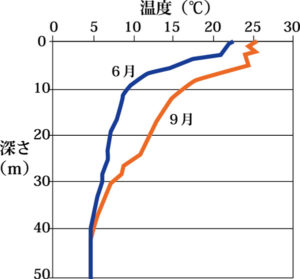 Academic research has been conducted on the water temperature in Lake Numazawa, showing seasonal changes as illustrated in the provided diagram. The water is quite cold in early spring but warms up significantly in the summer.The optimal water temperature for kokanee is considered to be around 12 degrees Celsius, which is believed to have a significant influence on their swimming depth.
Academic research has been conducted on the water temperature in Lake Numazawa, showing seasonal changes as illustrated in the provided diagram. The water is quite cold in early spring but warms up significantly in the summer.The optimal water temperature for kokanee is considered to be around 12 degrees Celsius, which is believed to have a significant influence on their swimming depth.
Section 2: School Movements
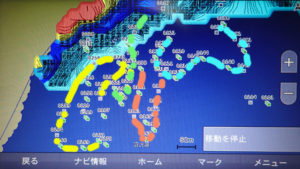 I’ve observed the movements of four schools on the western side of the lake. It was interesting to see that the schools never moved in a straight line; their movements were highly irregular. When I’ve positioned my kayak directly over a school to drop my rig and then reeled in a fish, a look at the fish finder often shows the school has moved in a completely unexpected direction.
I’ve observed the movements of four schools on the western side of the lake. It was interesting to see that the schools never moved in a straight line; their movements were highly irregular. When I’ve positioned my kayak directly over a school to drop my rig and then reeled in a fish, a look at the fish finder often shows the school has moved in a completely unexpected direction.
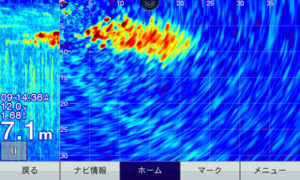 Additionally, the shape of the school differs greatly between those that are feeding and those that have become wary of the boat. Feeding schools tend to spread out horizontally, while a school on alert becomes vertically dense, stays in slightly deeper water, and can be seen swimming away at high speed.
Additionally, the shape of the school differs greatly between those that are feeding and those that have become wary of the boat. Feeding schools tend to spread out horizontally, while a school on alert becomes vertically dense, stays in slightly deeper water, and can be seen swimming away at high speed.
I’ve even seen a school of fish flee at an incredible speed after an engine-powered boat passed over them. These behaviors show that kokanee are quite delicate and wary fish.
Section 3: Seasonal Changes in School Size and Swimming Depth
The size of the schools and their swimming depth also change with the seasons. The diagram illustrates the monthly changes in swimming depth for a specific year.
 In early spring (April – early May), you’ll often see large schools, estimated to have over 100 fish. During this period, the presence of schools is very distinct, with clear differences between areas where schools are and are not present. They are mostly found in the mid-water column, around 15 meters deep. During this season, you need to focus all your efforts on detecting the schools. This is also a time when large schools swim relatively close to each other, and you can often observe dynamic movements like them splitting and merging.
In early spring (April – early May), you’ll often see large schools, estimated to have over 100 fish. During this period, the presence of schools is very distinct, with clear differences between areas where schools are and are not present. They are mostly found in the mid-water column, around 15 meters deep. During this season, you need to focus all your efforts on detecting the schools. This is also a time when large schools swim relatively close to each other, and you can often observe dynamic movements like them splitting and merging.
In early summer (late May – June), as the surface water temperature rises to a more suitable level for growth, the swimming depth shifts to a shallower layer, less than 5 meters deep. The schools also tend to break up into medium-to-small groups. Kokanee in this shallow layer are more likely to sense a boat, even if you approach quietly, making them very difficult to catch with my method. In these cases, it might be more effective to use a style that involves casting lures or jigs ahead of the boat to attract them.
 In midsummer (July – August), medium-sized or larger individuals tend to form small schools of 3 to 5 fish and swim in the mid-water column. While it’s relatively easy to find the schools themselves, the probability of a hit decreases because the schools are smaller. Therefore, during this time, it’s crucial to be creative with the timing of your rig drop and your retrieval tempo.
In midsummer (July – August), medium-sized or larger individuals tend to form small schools of 3 to 5 fish and swim in the mid-water column. While it’s relatively easy to find the schools themselves, the probability of a hit decreases because the schools are smaller. Therefore, during this time, it’s crucial to be creative with the timing of your rig drop and your retrieval tempo.
In autumn (September), large schools can be seen again. Although their reaction to sabiki rigs tends to be sluggish after the summer, they can sometimes suddenly switch to active feeding in conditions like cloudy skies or light rain. The relationship between this kind of weather and fish activity is something that deserves continued observation.
Chapter 1: Introduction
Chapter 2: Annual catches and overview
Chapter 3: Actual fishing method
Chapter 4: Attention to equipment
Chapter 5: The ecology of Kokanee in my home lake (Lake Numazawa, Fukushima Prefecture)
Chapter 6: Enjoying Kokanee
Chapter 7: Conclusion
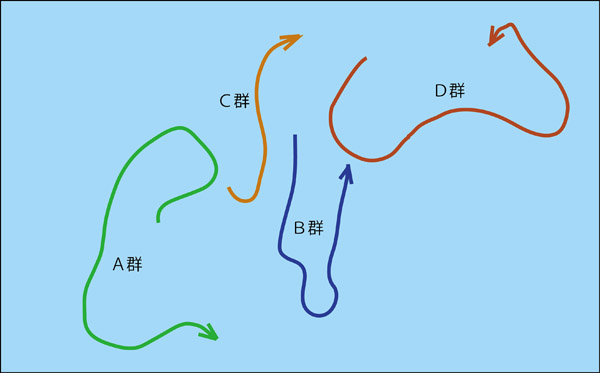
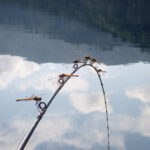
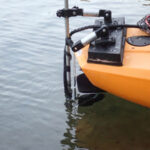
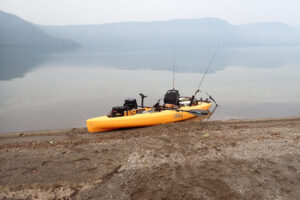
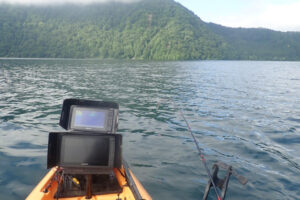
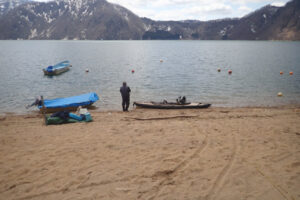
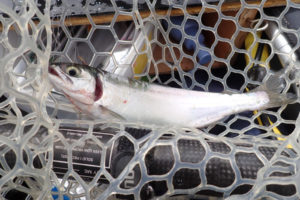
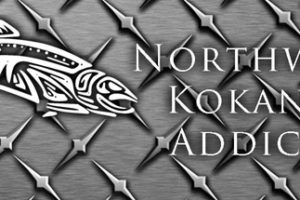
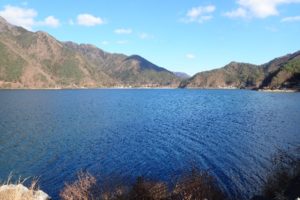
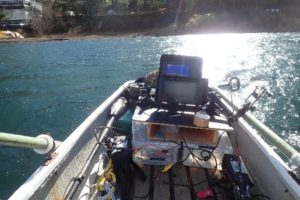
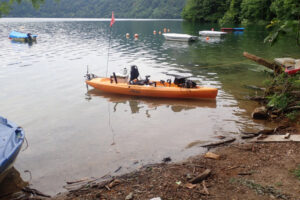
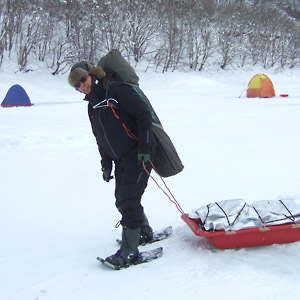
コメントを残す